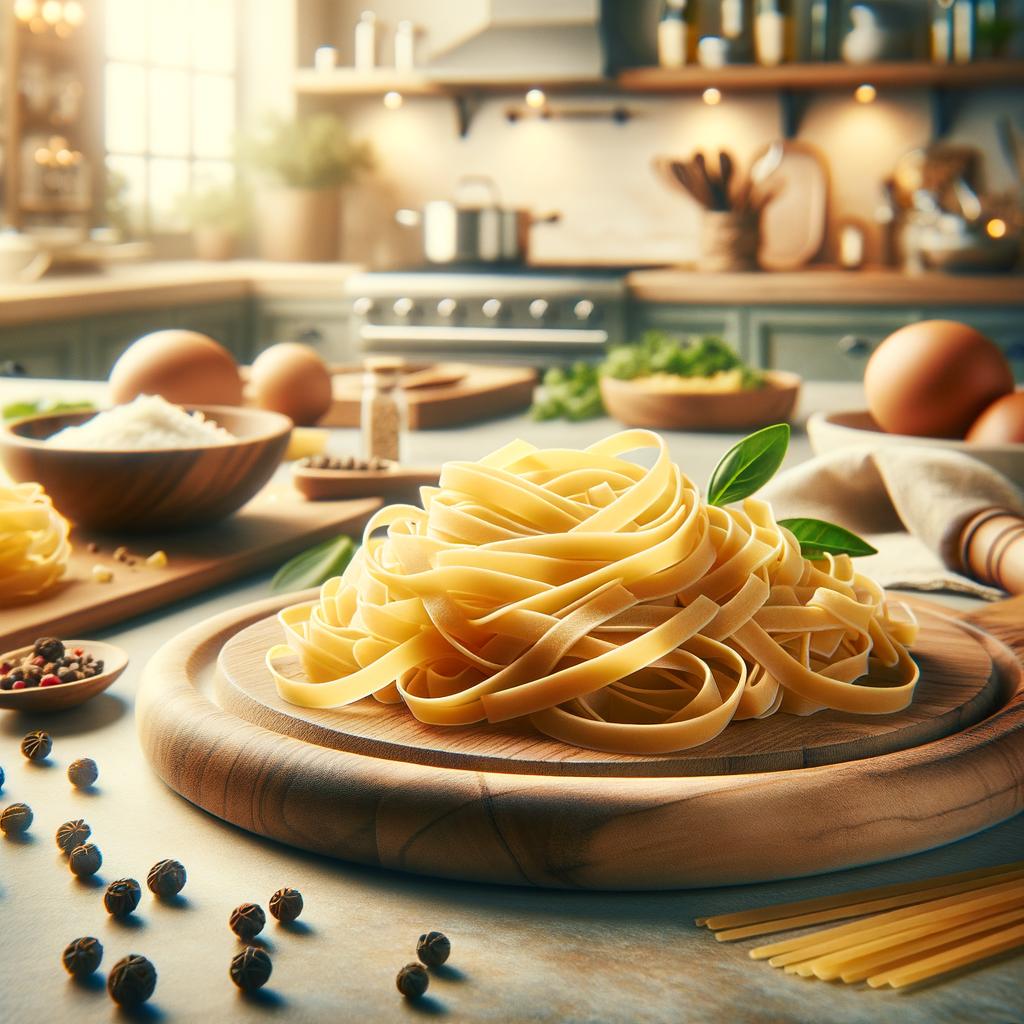Fettuccine Pasta

Description
Fettuccine, a beloved member of the pasta family, is a type of noodle that is as delightful to the palate as it is to the eye. It's a thick, flat, ribbon-like pasta, traditionally made from egg and flour. Its creamy, off-white hue is a testament to its rich egg content. The texture is smooth, yet firm to the bite, providing a satisfying chewiness that is a joy to savor. Its flavor is subtly nutty and wheaty, providing a splendid canvas for a myriad of sauces and ingredients. What sets fettuccine apart from its pasta siblings is its width, which is wider than linguine but narrower than lasagna, making it an ideal carrier for thick, hearty sauces.
Primary Uses
Fettuccine is a culinary chameleon, able to adapt to a wide range of dishes and cuisines. Its most famous incarnation is in Fettuccine Alfredo, a creamy, cheesy delight that originated in Rome. However, its versatility doesn't stop there. It can be paired with robust meat sauces, tossed with fresh vegetables, or simply adorned with olive oil and garlic. Its broad, flat surface makes it an excellent choice for capturing every drop of flavor from a sauce. Beyond the culinary world, fettuccine also plays a role in cultural celebrations, such as the Feast of the Seven Fishes in Italy, where it's often served with seafood.
History
The history of fettuccine is steeped in the culinary traditions of Italy. Its name, derived from the Italian word "fettuccia", means "little ribbon", a nod to its distinctive shape. While its exact origin is a matter of debate, it's generally believed to hail from the central and southern regions of Italy. Its popularity skyrocketed in the 20th century when Alfredo Di Lelio, a Roman restaurateur, created Fettuccine Alfredo to appease his pregnant wife's appetite. The dish was such a hit that it quickly spread across the globe, forever cementing fettuccine's place in the pantheon of beloved pasta.
Nutritional Information
Fettuccine, like most pasta, is a good source of carbohydrates, providing energy for the body. It also contains protein, thanks to its egg content, and is low in fat. Whole wheat versions offer additional nutritional benefits, including higher levels of fiber and B vitamins. However, as with any food, moderation is key, as pasta dishes can be high in calories, particularly when paired with rich sauces. When compared to thinner pasta like spaghetti, fettuccine's wider surface area allows for more sauce per bite, potentially increasing the calorie and nutrient content of your dish. But whether enjoyed as a hearty main or a side dish, fettuccine is a delectable testament to the art of Italian cuisine.

